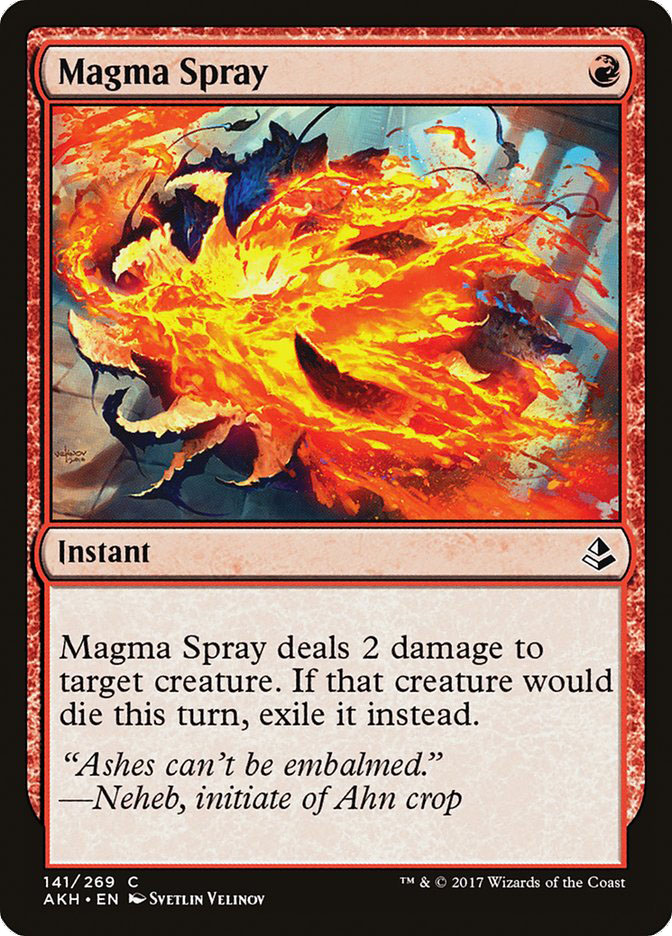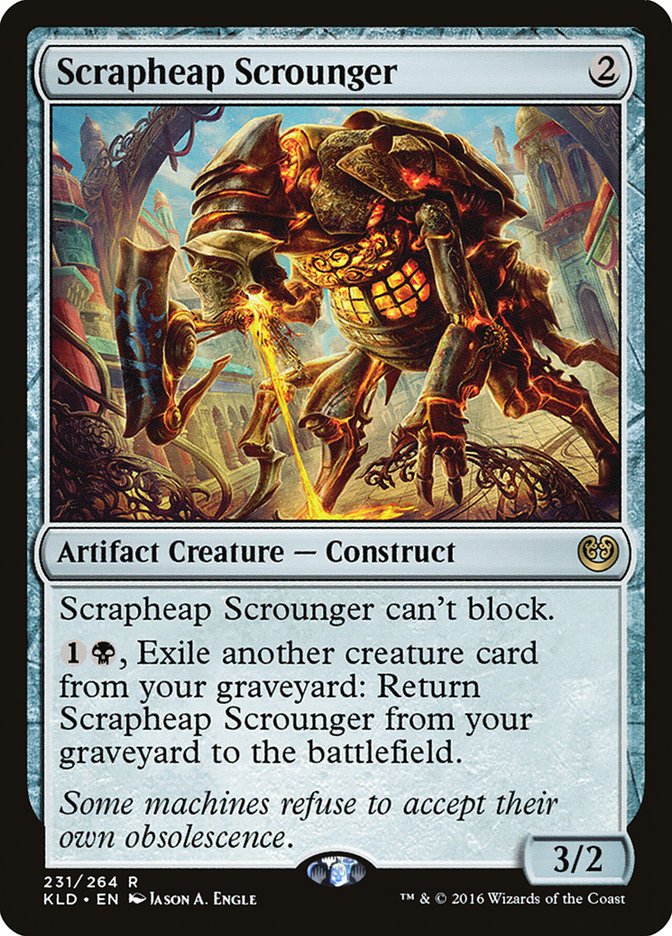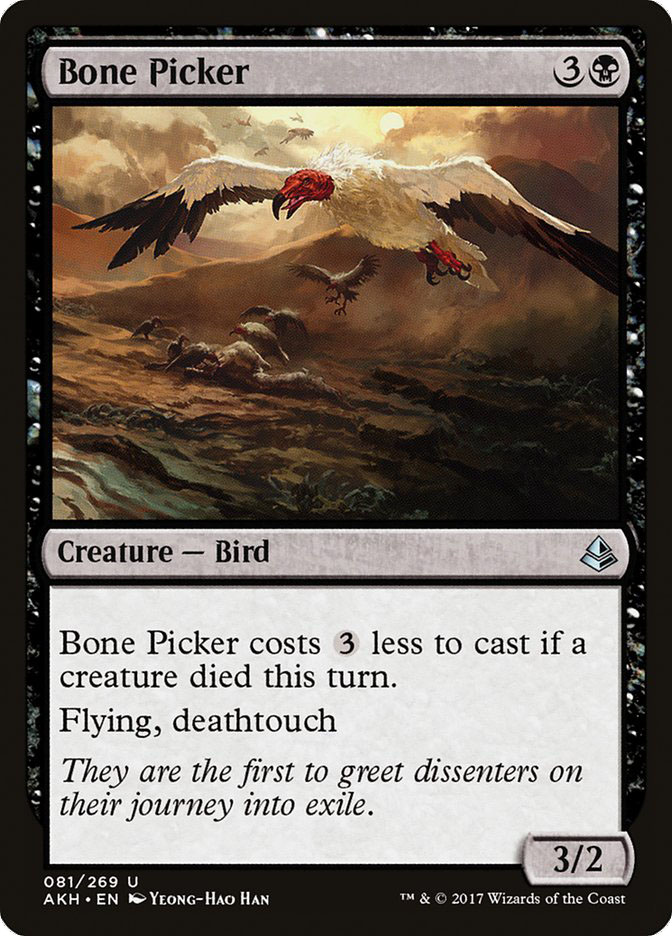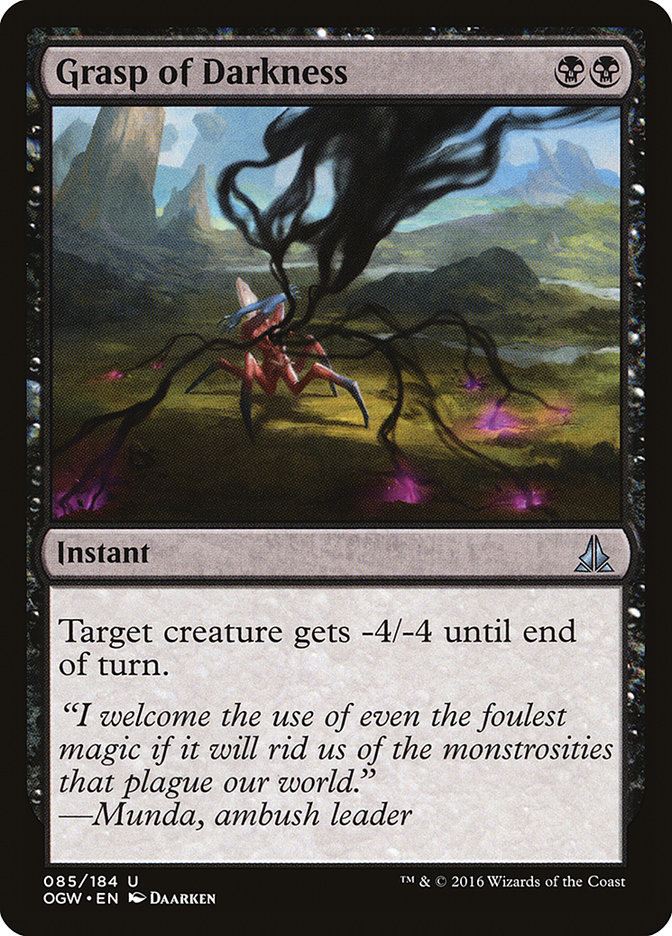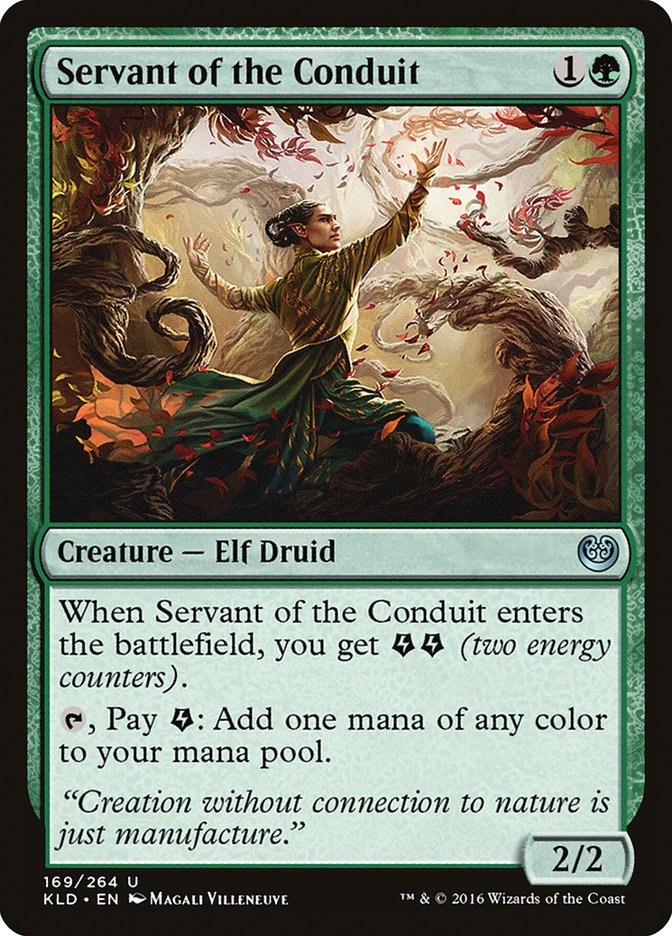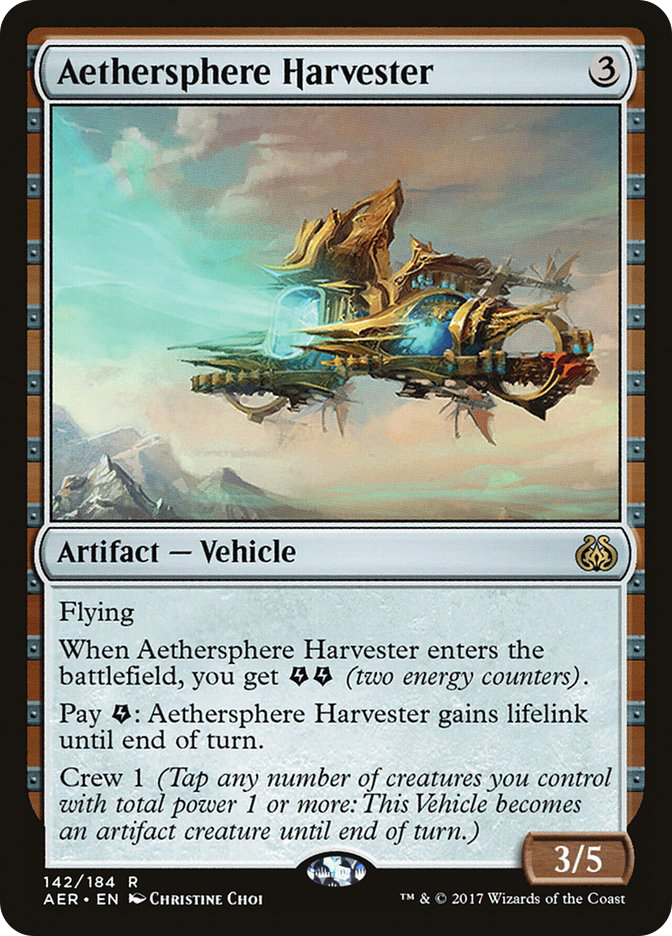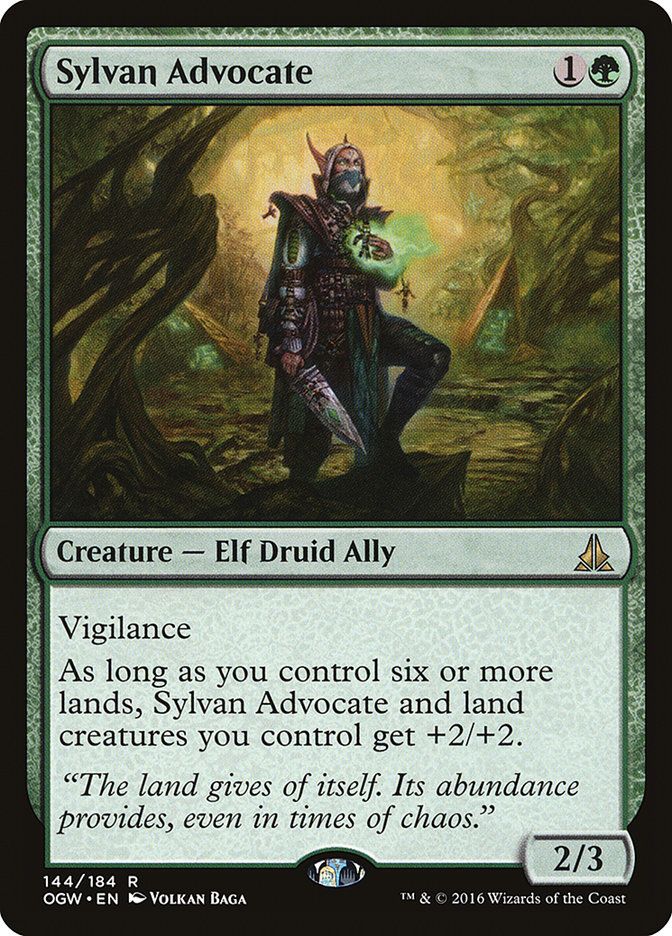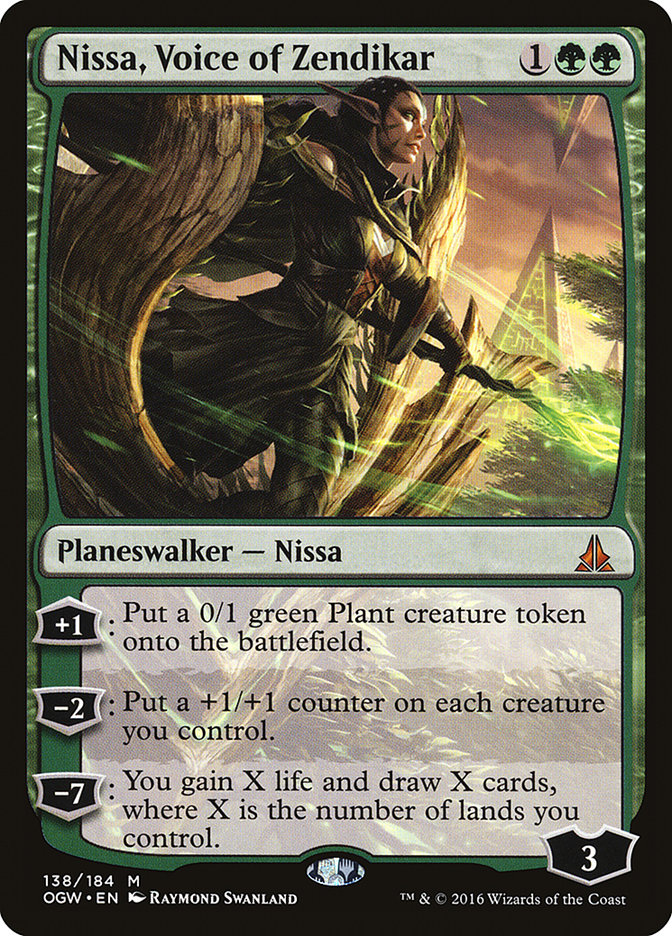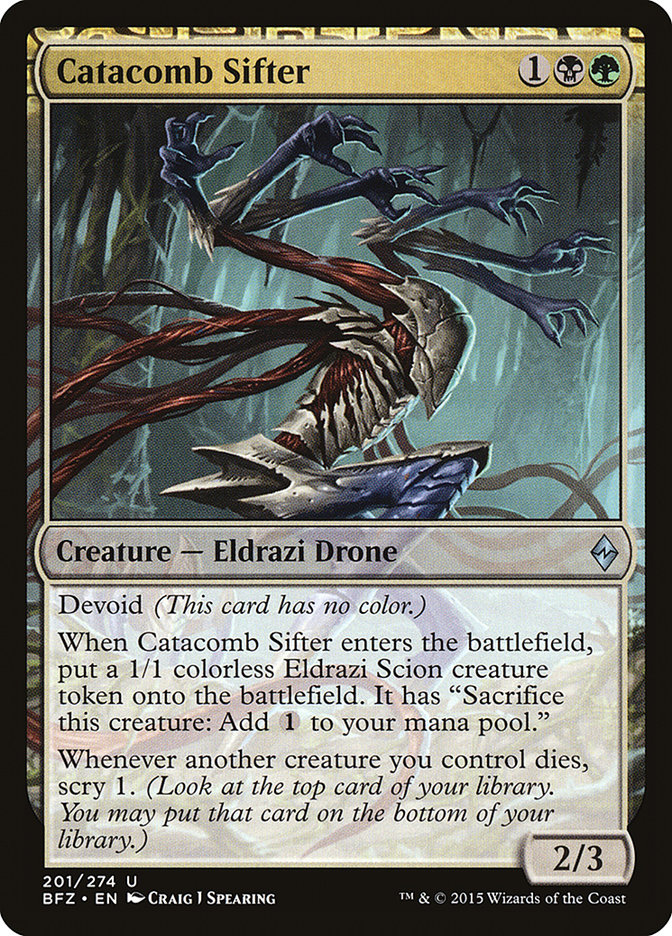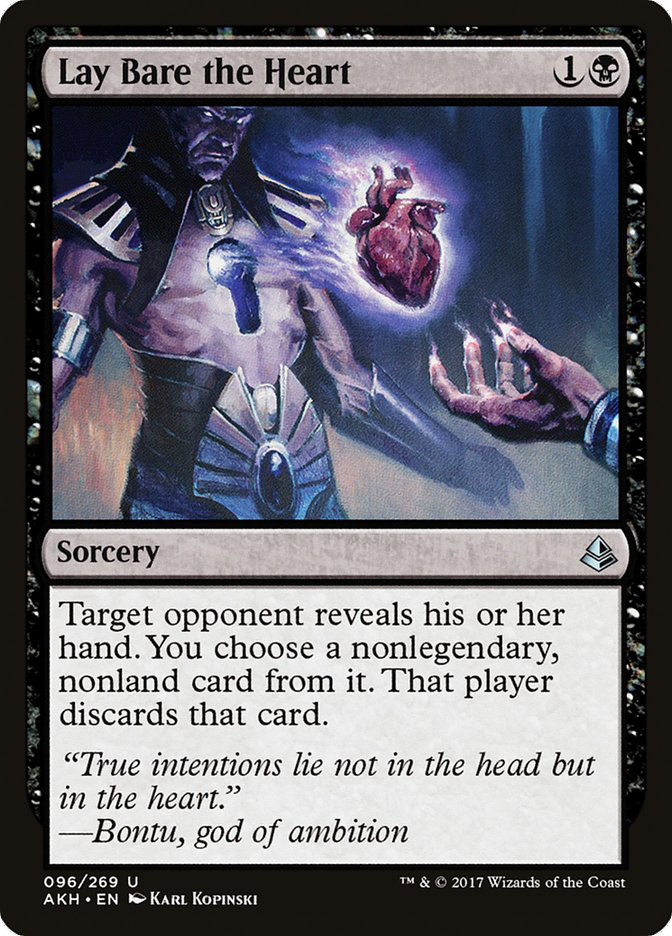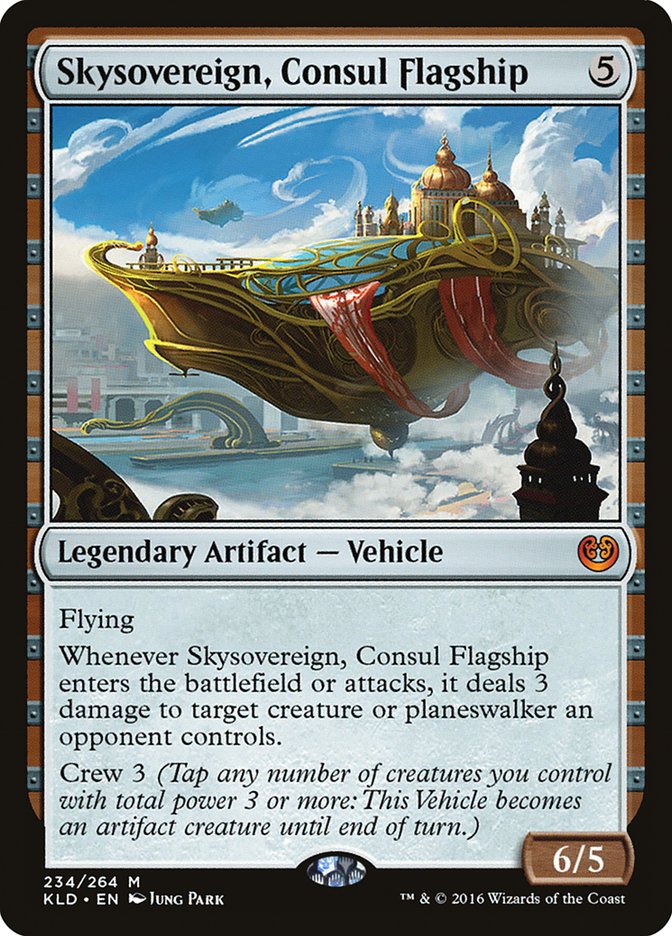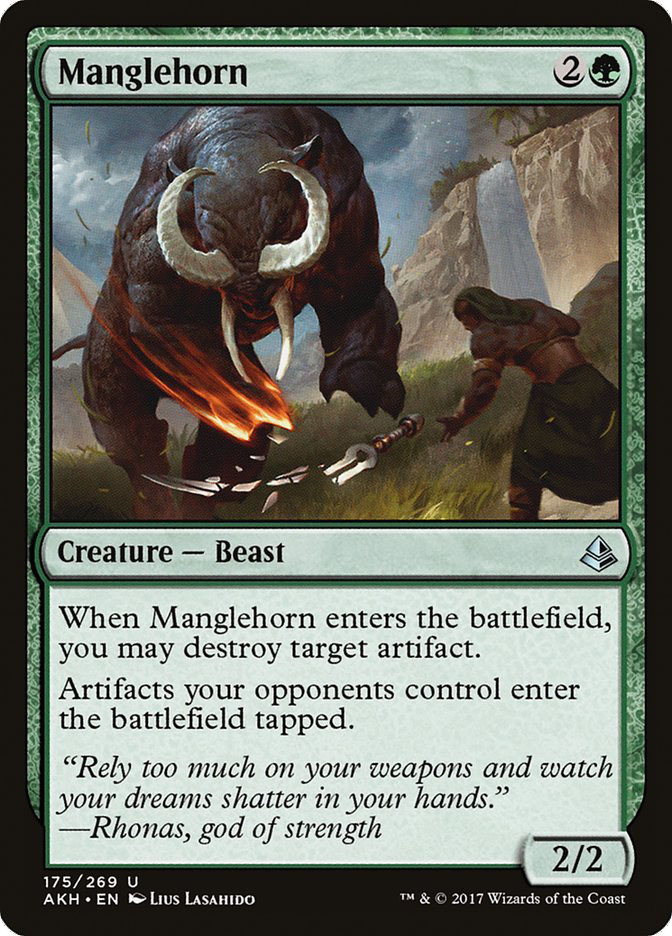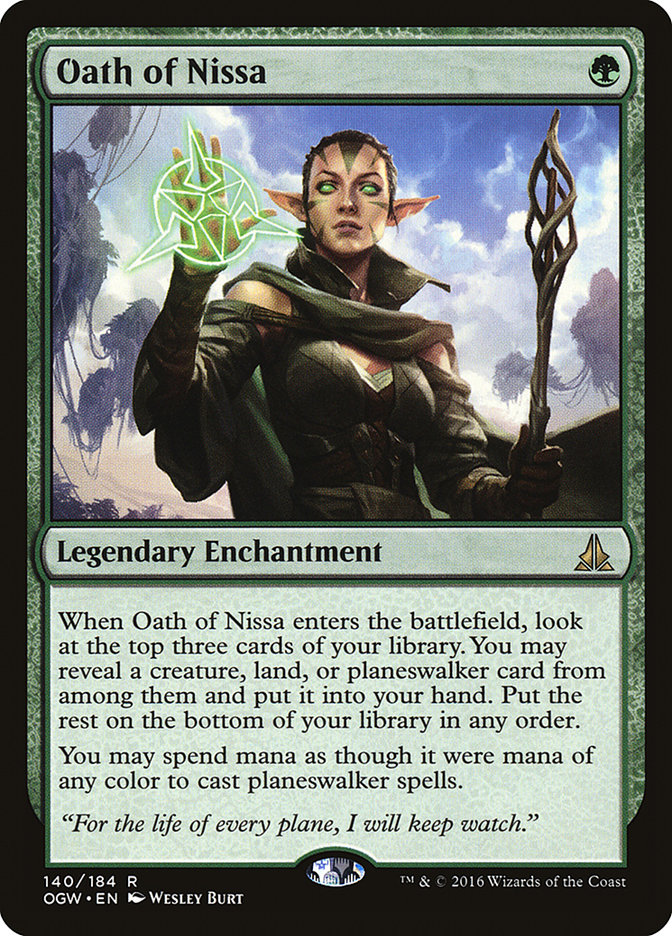With this week comes grave tidings, as no cards were added to the Banned and Restricted list for Standard. Wizards of the Coast is hopeful that Amonkhet will offer enough tools to build new archetypes, or push existing ones to the forefront of the format. They’re hopeful about this prospect, but they have the power to change their minds if things get out of hand. Regardless, we gotta work with what we got, so that’s what we’re going to do.
That was how my article this week was originally supposed to open, but with last night’s news of the untimely end to Felidar Guardian’s reign of terror on Standard, things should start to open up a bit. For one, we can actually tap out on our own turn without the fear of death. Now, the card with the biggest target on its head will be Gideon, Ally of Zendikar. It should be interesting to see how people adapt.
I could write an entire article about what just happened, and I’m sure it will be one of the more important events for Standard in the coming months, but we’ve got other things to worry about. Unfortunately, I had a good, long spiel about how insane Glorybringer was in the Felidar Guardian shell, but that isn’t what this article is about. It never really was. Today we’re going to be talking mostly about B/G Aggro, but first…
Creatures (4)
Lands (26)
Spells (30)

I don’t think I’ll ever be able to let it go…
I’ll keep it short, since I tend to get distracted by shiny things. This is an exceptional first draft of the deck. And, after playing against it four or five times already on Magic Online, it runs pretty smoothly. Censor is just as good as I would have hoped, while Sweltering Suns gives you a sweeper that isn’t straight-up dead in a control mirror. But to me, the true standout is Pull from Tomorrow. I didn’t think the card is nearly as good as Sphinx’s Revelation, but that’s a high bar to set.
The deck is sleek with very little fluff. The sideboard plan is good for punishing players who sideboard out most or all of their removal. Confiscation Coup is particularly annoying against B/G Aggro, and the maindeck copies of Magma Spray are giving my Scrapheap Scroungers a severe case of The Fear.
Long story short: this deck is solid. If you like control, give it a shot. As first runs go in a new format, it looked sleek, smooth, and consistent, and that’s just about all you can ask for in a deck this early in testing. Will it win the Pro Tour? Most likely not, but it could make a big impact at
Let’s move on.
Since Monday, I’ve played in five Standard Leagues with one bad U/R Spells deck and four different variations of B/G Aggro, mostly to see which variation of the archetype I thought would be best for handling the Big Two. Now that we no longer have to worry about the threat of Felidar Guardian, some of our card choices will change. There are so many ways you can build the deck that it will be difficult to figure out the best version, given so little time to actually playtest.
But it wouldn’t be much fun if it was easy.
While some of these experimental variations on the archetype didn’t exactly go according to plan, I think it is important to look at each one and see what worked and what didn’t (and why). So without further ado, I present:
The Snek Show: The Snekening
First on the list is an idea stolen from Jadine Klomparens and her article from earlier this week. Bone Picker is a card that caught my attention early, since it pairs so nicely with Fatal Push.
Creatures (25)
- 3 Catacomb Sifter
- 3 Verdurous Gearhulk
- 4 Scrapheap Scrounger
- 4 Winding Constrictor
- 3 Rishkar, Peema Renegade
- 4 Walking Ballista
- 4 Bone Picker
Lands (24)
Spells (11)

So what do I like about this version of the deck? Honestly, Bone Picker wasn’t nearly as good as I would have hoped. I didn’t get to pull off too many tricks with Walking Ballista or Fatal Push to cast it early, and I mostly just cast it like ye olde Snapping Drake (for four whole mana). The flying part was relevant for pressuring planeswalkers, but I can honestly say that one League with this card was enough to know I didn’t want it.
The thing about Bone Picker is that it only really “works” if your opponent is playing creatures that are easily dispatched by Grasp of Darkness and/or Fatal Push. On top of that, the color restrictions to cast Grasp of Darkness and the follow-up Bone Picker are really tough. While possible, it makes it difficult to build your manabase in order to utilize it and incentivizes you to stay light on the green cards. While that’s not necessarily a bad thing, since a lot of the black cards are so powerful, the heart of the deck is green. Black is mainly there for removal and moral support.
One minor problem I found with Bone Picker is the same problem I’ve been having with stuff like Thing in the Ice and even Enigma Drake: cards with a higher amount of raw power are just better than those that focus too much on synergy. Some synergy is good, but those cards need to be able to stand on their own. While I’m here trying to “nut draw” people by killing their creature and casting a 3/2 flier for one mana, they’re going to start casting stuff like Gideon, Ally of Zendikar and Heart of Kiran. And if I’m being honest with myself, I was embarrassed by how bad my deck felt throughout the entire League.
And you know what? I still went 4-1 because most of the deck revolves around cards with minor synergy that are reasonably costed. If Bone Picker’s full mana cost were three mana, it would probably end up being Standard-playable, but four mana is just a tad too much. The difference between Winding Constrictor and Bone Picker is that I’m perfectly fine casting a 2/3 creature for BG that will almost assuredly give me a significant advantage if my opponent doesn’t kill it. Just think of Bone Picker like a mediocre version of Delver of Secrets: cheap and evasive, but high-variance.
My goal in building this version was to give myself a flying threat that could pressure a resolved planeswalker if I was able to put a counter on it with Rishkar, Peema Renegade (or Verdurous Gearhulk, I guess). Unfortunately, it just didn’t work out as planned. Lesson learned.
Let’s continue with the next iteration.
Creatures (25)
- 1 Kalitas, Traitor of Ghet
- 2 Tireless Tracker
- 1 Gonti, Lord of Luxury
- 3 Verdurous Gearhulk
- 3 Scrapheap Scrounger
- 4 Servant of the Conduit
- 4 Winding Constrictor
- 3 Rishkar, Peema Renegade
- 4 Walking Ballista
Lands (24)
Spells (11)

This version of the classic B/G Aggro archetype looked a lot like the deck Brad Nelson and a few of his teammates played at Pro Tour Aether Revolt. A minor energy theme helped fuel both Servant of the Conduit and Aethersphere Harvester, but you didn’t have all the mediocre green creatures that try to consume all of said energy. After all, who wants to play Longtusk Cub when Fatal Push and Harnessed Lightning are running rampant?
Instead of focusing too much on the energy theme, we’re using Servant of the Conduit to give us a lightning rod of sorts for early spot removal so that our Winding Constrictor gets more value in the mid- to-late game. And if it somehow survives, that just means we’re ramping toward our big spells at a faster pace, or just casting multiple spells a turn. You also get to play Tireless Tracker and a land on the third turn, which is a boon when your main goal is curving out.
Aethersphere Harvester is a nod to Mardu Vehicles but isn’t that bad against the rest of the format. In a vacuum, a 3/5 flier for three mana is nothing to sneeze at, but we all know by now that Vehicles aren’t exactly creatures. Once again, we have a synergy dilemma of sorts. Flying can be a big deal for keeping their planeswalkers in check. The lifelink can also be relevant in a number of situations against a variety of decks, but even more so when you start putting counters on it via Rishkar, Peema Renegade or Verdurous Gearhulk. And, as you can see with Bone Picker, I’m really looking for a solid flier to add to the archetype.
The downside to playing this version of the deck is that it felt a little too energy-light. Brad’s original version focused on more two-drop creatures like Glint-Sleeve Siphoner, and cutting those made the deck feel a bit weak on occasion. And without access to one or two more energy-based cards, Aether Hub wasn’t as reliable as I wanted it to be.
Overall, if you want to play this version, I suggest playing a few more energy-based cards. Whether that means Attune with Aether or Glint-Sleeve Siphoner is entirely up to you, but don’t go crazy. If you start putting Longtusk Cub and Greenbelt Rampager into your deck, my guess is that you’re going to regret it.
Next up:
Creatures (23)
- 4 Catacomb Sifter
- 4 Sylvan Advocate
- 4 Verdurous Gearhulk
- 4 Winding Constrictor
- 3 Rishkar, Peema Renegade
- 4 Walking Ballista
Planeswalkers (3)
Lands (23)
Spells (11)

This one is a bit more out-there in terms of what we’re trying to accomplish. Nissa, Voice of Zendikar is a great card against every deck in the format that isn’t Mardu Vehicles and actually got a lot better without Felidar Guardian in the format. It does hurt your manabase a bit if you want to reliably cast it, but now that Felidar Guardian is gone, it could be time to trim on Grasp of Darkness. Since Oath of Nissa helps cast….well…Nissa, we might not need so many Forests.
Sylvan Advocate is the two-drop of choice here, since it plays nicely with Rishkar, Peema Renegade and Nissa, Voice of Zendikar. Both can pump it, making it a valuable asset on both offense and defense thanks to vigilance. Plus, it can attack and then tap for mana. Does it die to basically everything? Maybe, but if the game goes long enough, it is a fine topdeck.
Unfortunately, Sylvan Advocate doesn’t have nearly the same upside if it survives as either Grim Flayer or Servant of the Conduit. In fact, the only time Sylvan Advocate really shines is when you’re flooding out. That leads me to believe that I just built the deck incorrectly and should be playing a ton of Tireless Tracker to help it along.
What I did like was Catacomb Sifter, though I don’t know if it actually belongs in this list. While the body isn’t all that good, the constant scrying makes it more likely that you draw your high-impact cards. The extra body is nice for Nissa, Voice of Zendikar, both in protecting it and adding value to the minus ability that pumps your team. Plus, we get to cast Verdurous Gearhulk a turn earlier, so there’s that. So while I did learn that I liked Catacomb Sifter in a vacuum, I think the major takeaway here is that I don’t know how to build decks but can quickly recognize mistakes.
The end.
After a quick 1-2 with this deck, I was ready to hang it up. But after feeling out just how good Catacomb Sifter was, I decided to build a version that focused on pushing it just about as far as it could go.
Creatures (26)
- 4 Catacomb Sifter
- 2 Kalitas, Traitor of Ghet
- 2 Tireless Tracker
- 3 Verdurous Gearhulk
- 4 Scrapheap Scrounger
- 4 Winding Constrictor
- 3 Rishkar, Peema Renegade
- 4 Walking Ballista
Lands (24)
Spells (10)

I felt good about the first draft of this version. My goal here, for the most part, was to make Catacomb Sifter as valuable as possible. Kalitas, Traitor of Ghet is pretty awesome when you can cast it and Fatal Push in the same turn. Catacomb Sifter’s mana generation helps facilitate exactly that. In addition to that swingy play, you can also just ramp into your five-drops. If I’ve learned anything in the last six months of playing Standard, it is that Skysovereign, Consul Flagship isn’t seeing nearly enough play. That card is messed up.
Scrapheap Scrounger was the only card that seemed a little out of place, but my gut told me that it was the best two-drop for fighting both control and Four-Color Saheeli. However, with Saheeli Rai no longer a true threat, the real question becomes this: how popular will control decks become? If they flood into the metagame, that means Scrapheap Scrounger is still good to go. And I might just leave it there until someone gives me a good reason to cut it. In a world where every deck can play a long game of Magic, having a creature that constantly returns to apply pressure is a nice for a deck like B/G Aggro. We have to keep up! Tireless Tracker can’t hold the world on its shoulders.
I think this iteration of B/G Aggro is where I’m going to continue my efforts. It was the sole 5-0 of the bunch, and it felt the best in terms of fluidity, speed, and power. While some of the cards don’t exactly work well together (like Scrapheap Scrounger and ramp effects), it is important to have a balance so that you can sideboard into the best iteration of the deck for the given matchup. Catacomb Sifter can be clunky at times, but you’ll often need a defensive three-drop after playing Scrapheap Scrounger. See? Balance. Three power for three mana on two different bodies isn’t that bad either. Plus scry!
The sideboard is still a work in progress. Until I get a better idea of what I’m going to be facing off against now that there’s a Felidar Guardian-sized power vacuum in Standard, I think the safe bet is having cards that allow you to be flexible. Tireless Tracker, for example, comes in against just about every archetype, simply because it is a generic replacement for cards that might not be too good in the first game. A common theme, as it were.
Lay Bare the Heart was actually Transgress the Mind, but after careful consideration I’m starting to come around to the idea that it might be better. While it can’t hit opposing expensive legendary creatures, it can strip a Harnessed Lightning or other cheap card from your opponent’s hand. If the format starts to fill up with Archangel Avacyn or other legendary cards, I will likely make the move back toward Transgress the Mind.
In conclusion:
Maybe not good enough, but the times are a-changin’. In the future, if Mardu falls off in popularity, these could gain a lot of traction. For now, be wary.
Keep truckin’. This card has been one of the major reasons why I keep coming back to the deck. It could be affected by an influx of Magma Spray, but I’m still Scroungin’.
Build around it or don’t bother with it. The strength of this card lies in your ability to push the mana acceleration, where the additional body and scry ability are just a bonus. In a generic shell with Nissa, Voice of Zendikar, I would lean against.
Wom wom.
Even if you aren’t ramping into it, I would still play one of these over the fourth copy of Verdurous Gearhulk. The effect can be backbreaking for killing creatures or just finishing off planeswalkers. While Verdurous Gearhulk is certainly a fine card, sometimes you just need to get on a boat. And not that lame one that Chandra and Pia are always riding around on.
Don’t get caught up in trying to use this card to stop the Saheeli Rai combo, you know, since it doesn’t exist anymore. This is primarily for destroying Heart of Kiran, or the tempo play of killing an opposing Scrapheap Scrounger. It can do other things like topple the (not so) infamous Dynavolt Tower, but I would bet it hits Heart of Kiran around 80% of the time. I like it so far, but it hasn’t been overwhelmingly good. The body is relevant, and the ability is just okay.
This version of the deck could be a contender if you build it just right, but I don’t have enough experience with the archetype to make any serious suggestions. It could very well end up being the best iteration of the B/G Aggro archetype, but I’m nowhere near making that a reality.
I haven’t been impressed by either of these cards in any of the B/G Aggro decks I’ve played in some time. Sure, they can add a bit of consistency in the early turns of the game, allowing you to hit land drops, but the mana invested here is not irrelevant. A single Oath of Nissa can throw your entire curve off. At the moment, I’m much more of a fan of playing fewer gimmicky delirium spells, and more in the business of curving out. So far, I haven’t missed either of these cards.
Well, that’s all of it. In the last few days, this is what I’ve learned from playing B/G Aggro in all its glorious forms. The last one was my favorite by a wide margin, even if it was a bit on the durdly side. The good news is that my ideas for pushing Catacomb Sifter seemed to work. The bad news is that it’s Catacomb Sifter. More bad news is that about one-fifth of my matches were against Felidar Guardian decks, so take this information with a grain of salt. Play some matches. Learn some stuff.
I’ve had a ton of fun playing Leagues on Magic Online over the last few days, and I don’t see myself stopping anytime soon now that Feldiar Guardian is gone. While playing against Four-Color Saheeli and Mardu Vehicles was starting to get really old really quickly, I’m looking forward to my B/G Aggro decks losing to Gideon, Ally of Zendikar every other round.
Ya know, it could’ve been a lot worse.



